![]() info@rusticfrontiers.bt
info@rusticfrontiers.bt ![]() +975 17784494/17349862
+975 17784494/17349862
festivals in bhutan
- Home
- Special Interest Tour
- Festivals in Bhutan
FESTIVALS IN BHUTAN
*we add one of these cultural spectacles in the itinerary and customize your tour of your choice and interest.
Paro Festival
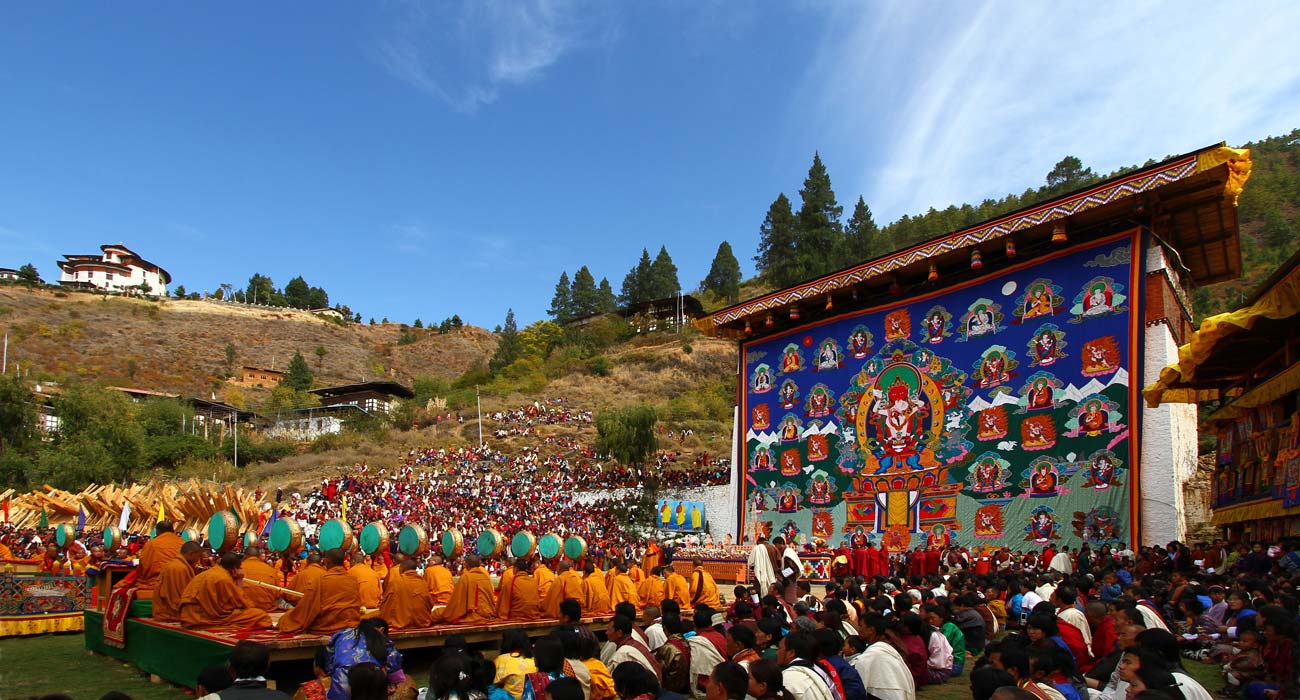 Paro Tshechu the flawlessly executed sacred event is the culmination of the dedication and years of hard work the monks put in to master the nuances of performing masked dance. These sacred dances are believed to invoke deities. The monks perform the dance wearing colorful silk brocade and ferocious mask. The event encapsulates the essence of the traditional arts and crafts of Bhutan and its culture.
Paro Tshechu the flawlessly executed sacred event is the culmination of the dedication and years of hard work the monks put in to master the nuances of performing masked dance. These sacred dances are believed to invoke deities. The monks perform the dance wearing colorful silk brocade and ferocious mask. The event encapsulates the essence of the traditional arts and crafts of Bhutan and its culture.
The Tshechu is held in the open courtyard with the backdrop of the majestic Paro Dzong. It is a spiritual and a social event where community members congregate dressed ostentatiously which is part of the tradition. Locals believe that one gains merits attending such events. Tshechu is also considered theatrical presentation about the afterlife and hence the event is highly revered.
The highlight of the Tshechu is the unfurling of the Thongdrel. At the break of dawn, the giant applique scroll is unfurled for public display. The painting depicts a seated Guru Rinpoche. Locals believe that a mere sight of the painting cleanses bad karma and accumulate good merits.
Thimphu Festival
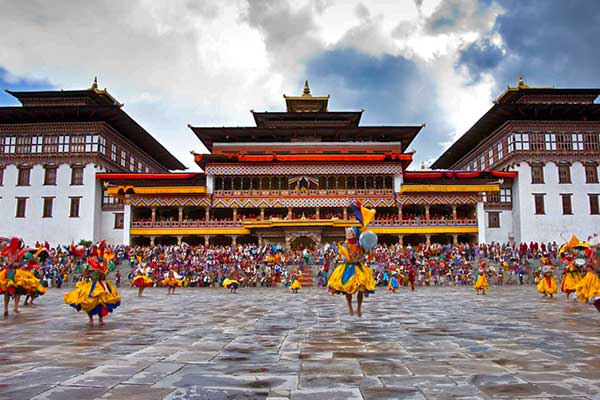 The major festival, Thimphu Tshechu starts on the 10th day of the 8th lunar month. The three-day religious event plays an important role in the lives of Bhutanese people as it is an opportunity for the Buddhist followers to immerse and cleanse themselves of the bad Karma and to remind them of what to make of their lives.
The major festival, Thimphu Tshechu starts on the 10th day of the 8th lunar month. The three-day religious event plays an important role in the lives of Bhutanese people as it is an opportunity for the Buddhist followers to immerse and cleanse themselves of the bad Karma and to remind them of what to make of their lives.
Staying true to the age-old tradition, locals dressed in their finest outfit and jewelries gather at the Thimphu Tashichoedzong. This spiritual social event brings people together unified by the common culture, tradition, and beliefs. The sacred mask dance (Chham) is believed to invoke deities blessing all who witness the Chham.
A Tsechu is performed as a tribute to Guru Rimpoche, a great Buddhist master who brought Buddhism to Bhutan. Sources say Guru Rimpoche healed a king called Sindhu Raja by performing eight forms of dances representing eight manifestations of Padmasambhava in the Bumthang Valley to restore the health of the king. These became the Chham dances depicting the grandeur of Padmasambhava which are now performed by monks and laymen.
The monks perform a series of meticulously choreographed religion inspired dances wearing grand silk robes and exquisitely crafted mask. It takes years learning and mastering the art of mask dance and months of meticulous practicing and rehearsing for the grand event.
The three-day event presents a collection of age-old Chham which includes Dance of the Stag and the Hounds, Dance of the Lords of the cemetery and the theatrical presentation of the judgment day after a person dies which are quintessential Buddhist beliefs and the Dance of Eight Manifestations of Padmasambhava.
Rhododendron Festival
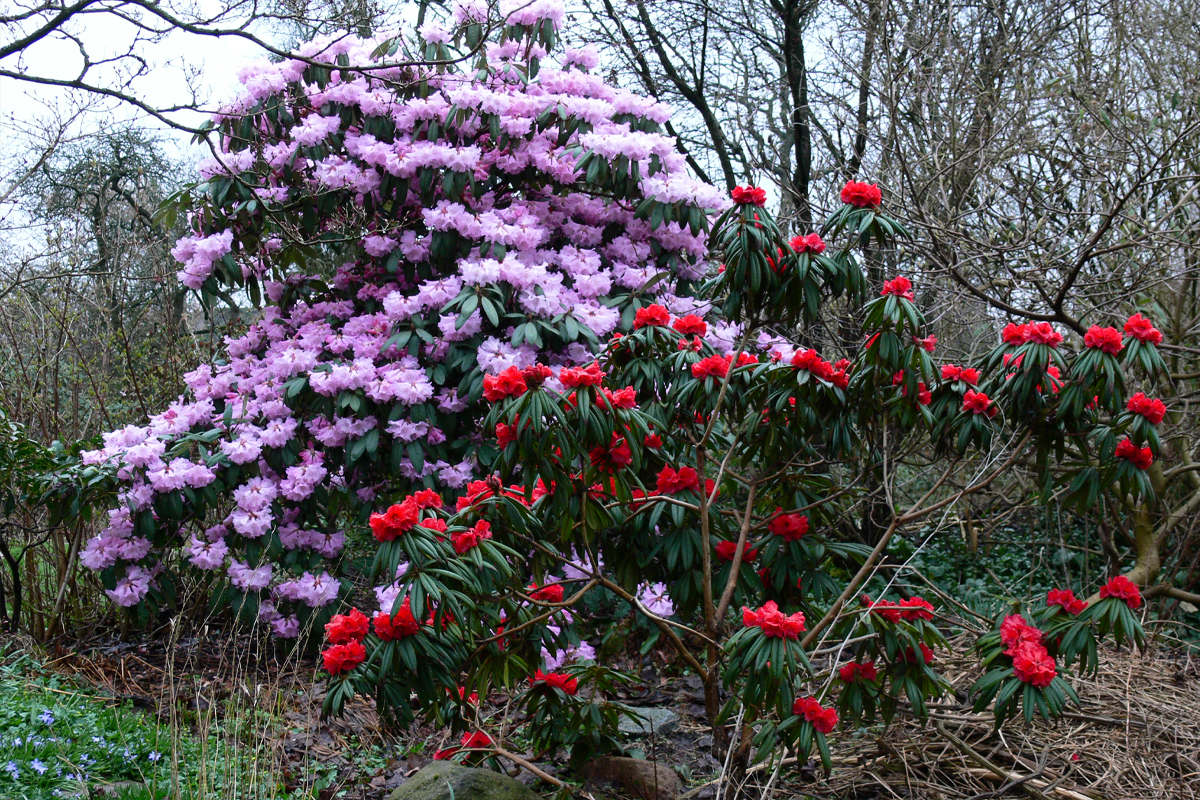 Visiting Bhutan in spring is another interesting and exciting moment especially if you are photography lover or interested in flowers. Grasp your lenses and plan to travel with us as our hill fill with the colorful flowers hanging from lush green trees. Rhododendron holds the special place among all the floral wealth of Bhutan. There are 46 species of rhododendrons found in Bhutan and the famous and the best site to explore these flowers is Dochu la Pass which is above 3000 meters. Although, blue poppy is our national flower rhododendrons are the true symbol of Bhutan’s natural wealth and heritage. Every year in spring, Lampelri Botanical Park hosts rhododendron festival which houses all 46 species of rhododendrons and of which 27 species are native to these place. Visitors can see all the varieties rhododendrons and other Himalayan floras.
Visiting Bhutan in spring is another interesting and exciting moment especially if you are photography lover or interested in flowers. Grasp your lenses and plan to travel with us as our hill fill with the colorful flowers hanging from lush green trees. Rhododendron holds the special place among all the floral wealth of Bhutan. There are 46 species of rhododendrons found in Bhutan and the famous and the best site to explore these flowers is Dochu la Pass which is above 3000 meters. Although, blue poppy is our national flower rhododendrons are the true symbol of Bhutan’s natural wealth and heritage. Every year in spring, Lampelri Botanical Park hosts rhododendron festival which houses all 46 species of rhododendrons and of which 27 species are native to these place. Visitors can see all the varieties rhododendrons and other Himalayan floras.
Black Necked-crane Festival
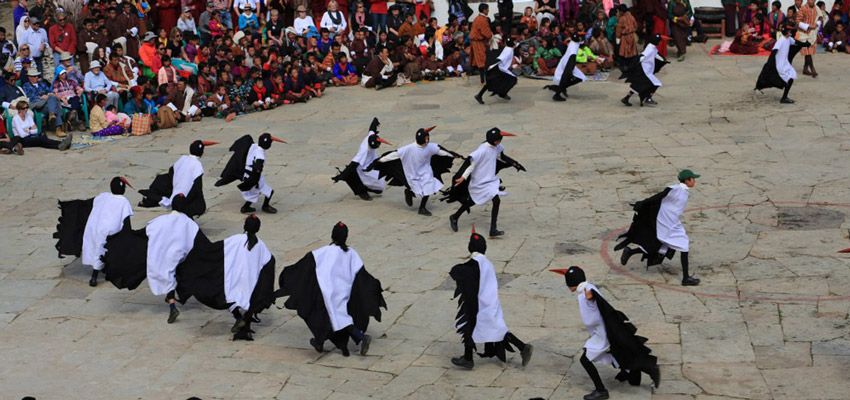 Black necked-crane is the last of the 36 species which migrates to some 0f the places including Phobjikha/ Gangtey valley from Tibet in winter. The heavenly birds make three rounds of the Gangtey monastery which stands atop a hill to pray for their wellbeing during their stay in the valley and they make another three rounds while going back to Tibet. People of Gangtey valley host one day festival to welcome these Devine birds in the courtyard of Gangtey monastery. Considering the arrival of their special guest (cranes) a good omen, people believe that as long as the birds keep on returning, the valley will remain fertile and flourished. As royal society of protecting nature (RSPN – an association to protect the nature) exhibits information about birds and other flora and faunas of the valley, the monks perform the ritual and mask dances and the school children come up with the dances especially choreographed dedicating to cranes.
Black necked-crane is the last of the 36 species which migrates to some 0f the places including Phobjikha/ Gangtey valley from Tibet in winter. The heavenly birds make three rounds of the Gangtey monastery which stands atop a hill to pray for their wellbeing during their stay in the valley and they make another three rounds while going back to Tibet. People of Gangtey valley host one day festival to welcome these Devine birds in the courtyard of Gangtey monastery. Considering the arrival of their special guest (cranes) a good omen, people believe that as long as the birds keep on returning, the valley will remain fertile and flourished. As royal society of protecting nature (RSPN – an association to protect the nature) exhibits information about birds and other flora and faunas of the valley, the monks perform the ritual and mask dances and the school children come up with the dances especially choreographed dedicating to cranes.
Druk wangyel Festival
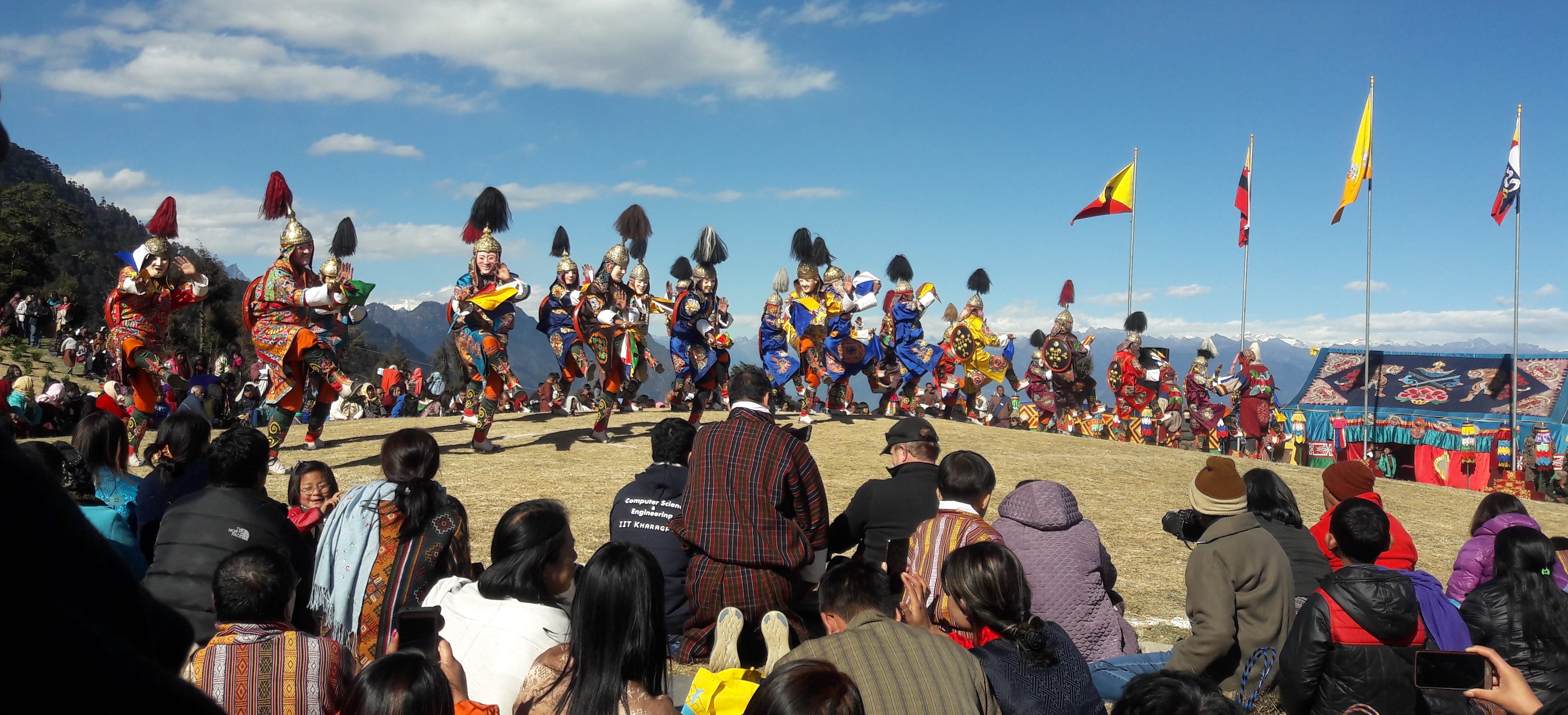 Dochula la pass is the pass between Thimphu and Punakha valley which offers best and 360 degree view of snow-capped Bhutan Himalayas including one of the highest unclimbed mountains in the world, Gangkar Puensum (peak of three spiritual brothers) 7,564m. It is home to 108 stupas and druk wangyel temple constructed to honor the victory over Indian militants in 2003 battle and liberate the departed souls. Coinciding the date of the battle month, every winter the royal family, royal army and locals assemble in Dochula to celebrate the victory/ to honor the victory which the small troop was led by the great fourth of Bhutan.
Dochula la pass is the pass between Thimphu and Punakha valley which offers best and 360 degree view of snow-capped Bhutan Himalayas including one of the highest unclimbed mountains in the world, Gangkar Puensum (peak of three spiritual brothers) 7,564m. It is home to 108 stupas and druk wangyel temple constructed to honor the victory over Indian militants in 2003 battle and liberate the departed souls. Coinciding the date of the battle month, every winter the royal family, royal army and locals assemble in Dochula to celebrate the victory/ to honor the victory which the small troop was led by the great fourth of Bhutan.
The dramatic dance of the farewell of heroes, combat of heroes and the return of heroes gained immense attention to the locals although it’s a newly added festival to the calendar. It is the only festival in Bhutan which does not revolve around the religious theme and solely performed by soldiers instead of monks or laymen. With the background of mesmerizing snowcapped mountain ranges, the festival happens on hilltop where the performers pay the homage to martyrs. The festival shows an interesting dance dedicated to the famous Tibetan poet/yogi Milarepa where you will see five demons trying to distract the yogi but subjugating with his powerful religious poetry.
Bhutan Highland Festival
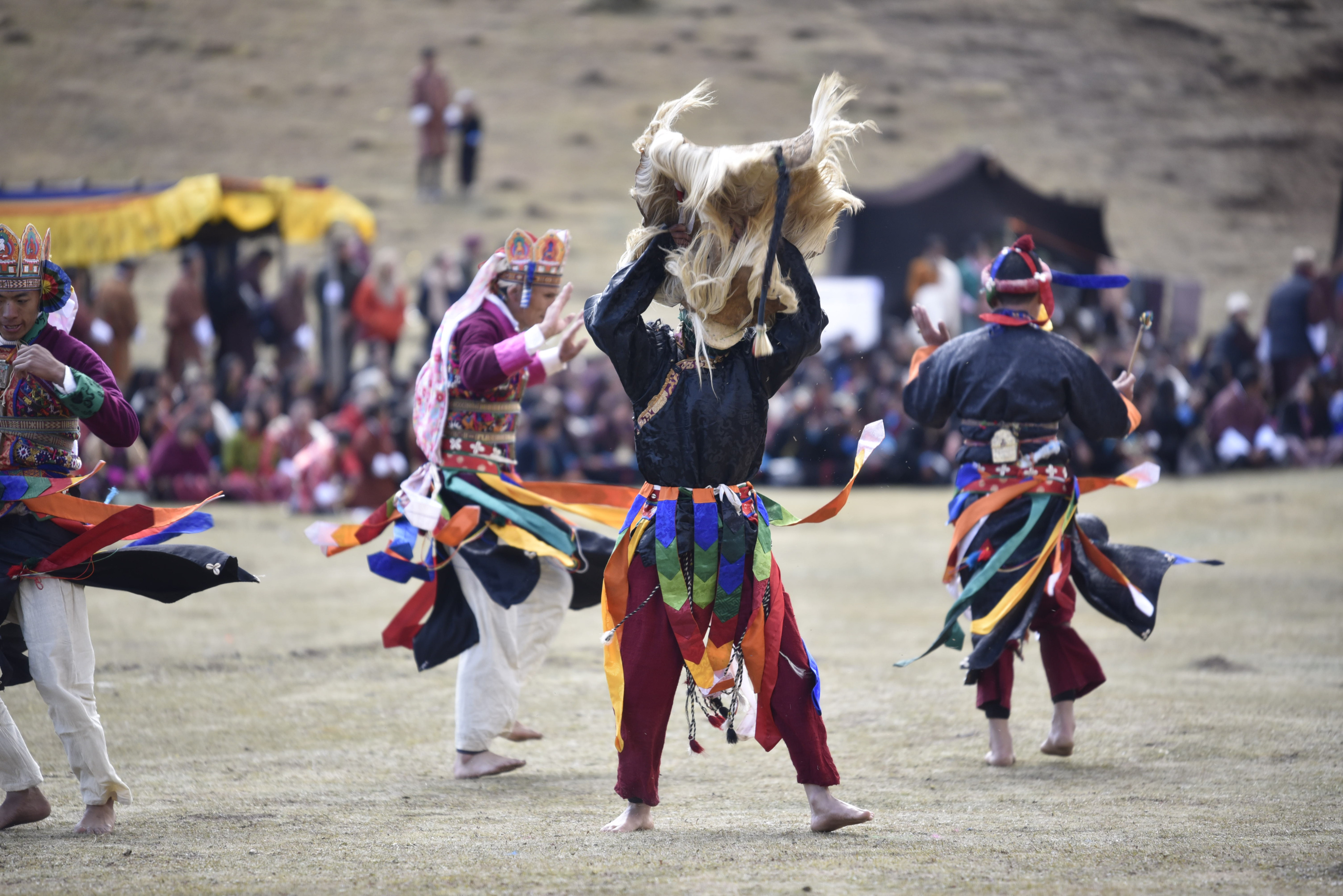 The highlander festival is being organized in Gasa district with the underlining idea of highlands vibrant and thriving economy and to sensitize the yak farming which has totally become the vulnerable culture in the past few years due to modernization. The festival showcases the highlander’s talents and exhibit highland as the pride of the country due to its aesthetic culture and costumes. This festival also brings the other parts of Bhutan/world to exchange the knowledge and skills that the people possess to have a better living with their culture of yak farming. It is also to educate the stakeholders on the importance of their spirited participation of enhancing the economic opportunities of the highlanders which will benefit the locals and grow this remotest area from better to the best.
The highlander festival is being organized in Gasa district with the underlining idea of highlands vibrant and thriving economy and to sensitize the yak farming which has totally become the vulnerable culture in the past few years due to modernization. The festival showcases the highlander’s talents and exhibit highland as the pride of the country due to its aesthetic culture and costumes. This festival also brings the other parts of Bhutan/world to exchange the knowledge and skills that the people possess to have a better living with their culture of yak farming. It is also to educate the stakeholders on the importance of their spirited participation of enhancing the economic opportunities of the highlanders which will benefit the locals and grow this remotest area from better to the best.
Jambay Lhakhang Drup
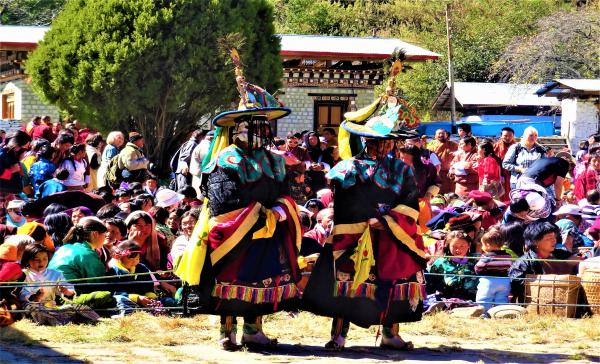 The Jambay Lhakhang Drup, or Jambay Lhakhang festival, is a captivating celebration in Bhutan, held at one of the country’s oldest temples, Jambay Lhakhang. The festival is famous for its nighttime events on the full moon, including a fire offering and a naked dance. The fire offering involves passing through an arch of flames, which locals believe removes obstacles and challenges.
The Jambay Lhakhang Drup, or Jambay Lhakhang festival, is a captivating celebration in Bhutan, held at one of the country’s oldest temples, Jambay Lhakhang. The festival is famous for its nighttime events on the full moon, including a fire offering and a naked dance. The fire offering involves passing through an arch of flames, which locals believe removes obstacles and challenges.
The naked dance, introduced by Terton Dorji Lingpa, symbolizes primordial wisdom and the essence of awareness and emptiness. Observing this dance is thought to help overcome anxiety and fear. In addition to these highlights, the festival features a variety of other vibrant and unique performances, including the Dance of Four Groups of Garudas, Stick Dance, Drum Dance of Dorji Lingpa, Dance of Lord of Death, Dance of Dramitse, and more